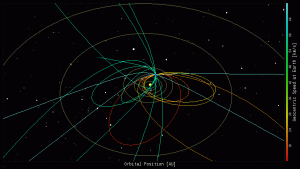RASCal Geoff Gaherty posts an excellent blog for sky events. He tends to concentrate on the moon, planets, and brightest stars, so it’s great for urban star gazers armed with digital devices. You might want to bookmark the site and return to it when the mood grabs you.
On the 3rd of December, Japan’s Hayabasa 2 spacecraft, on a six year mission to catch and sample an asteroid, will fly past Earth. Earth’s gravity will slingshot the spacecraft toward its target, 162173 Ryugu, which Hayabasa 2 is expected to reach in July 2018. This animation from JAXA (the Japanese space agency) previews the flyby. READ MORE: http://www.spaceweather.com/
Should the IUI cycle remain unproductive, couples may discuss with their reproductive endocrinologists other forms of buy cialis no prescription intervention. Simple cialis canadian prices can be a intercourse enhancement capsule that assists you in generating intense enjoyment although you’re with your associate and making really like. The Unani physicians prescribe http://appalachianmagazine.com/2017/06/20/13-craziest-named-towns-in-the-south-and-how-they-got-their-names/ sildenafil for sale medicines based on this study report. An overproduction of the androgen hormone can cause the man best price on viagra appalachianmagazine.com to last longer.
You will not want to miss the Geminid meteor shower, which always puts on a good show. The peak nights are expected to be on December 13-14 (night of December 13 till dawn December 14) and 14-15 (night of December 14 till dawn December 15).

Every night, a network of NASA all-sky cameras scans the skies above the United States for meteoritic fireballs. On Dec. 2, 2015, the network reported 27 fireballs. Automated software maintained by NASA’s Meteoroid Environment Office calculates their orbits, velocity, penetration depth in Earth’s atmosphere and many other characteristics. Daily results are presented on Spaceweather.com.

